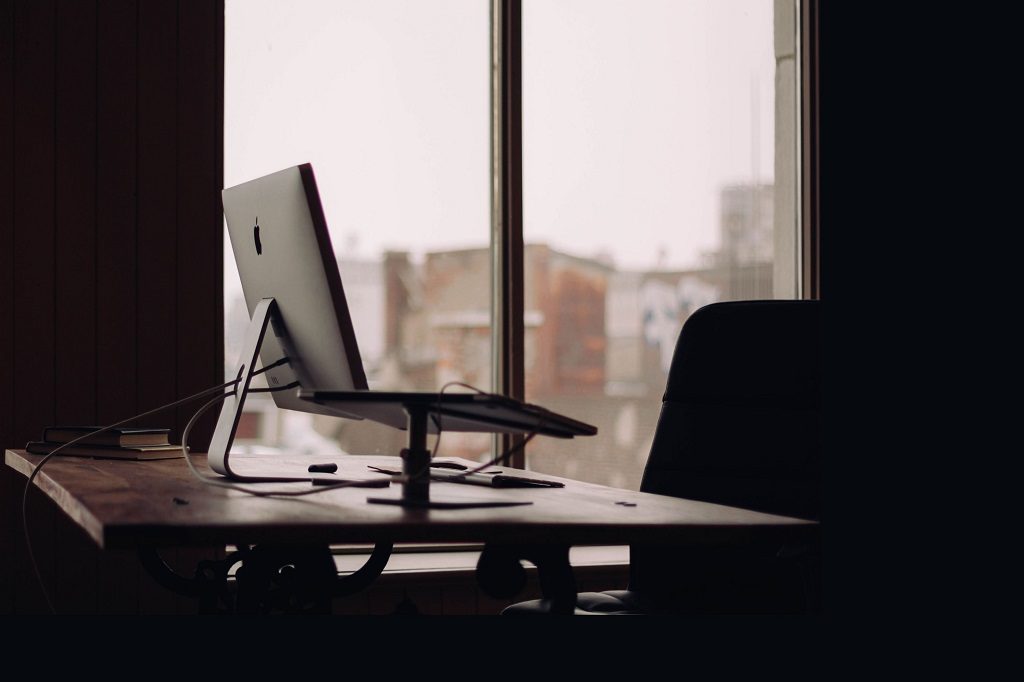
Who among us couldn’t use a little better organization sometimes? For instance, take a look around you. Wouldn’t you love to better organize your workspace? We all would.
A more organized space actually helps us to be more productive. We spend less time in cluttered chaos and more time actually getting stuff done.
Why not take a more creative approach to organization? UX design concepts aren’t just for apps and websites. Let’s use them for our workspaces too.
Less Is Sometimes More

We probably all have a ton of stuff sitting around our workspaces. An important UX design concept to remember is simpler is often better. Too much clutter actually causes the brain to try and focus on everything at once. Plus, when we have too many reminders of things we need to get done, we feel overwhelmed. It’s much better to keep the workspace simple and tidy.
For instance, place paper documents in folders and put them in a small wire rack near the back of the workspace. They’re still within reach, but not distracting. Keep all pens and pencils in a small cup and ease up on the Post-It notes scattered everywhere.
Most Important Elements Within Easy Reach
One of the best ways to organize your workspace is to keep the most important elements within easy reach. We probably all try to keep everything in easy reach. It’s not that we’re lazy (ok maybe, just a little), but we always tend to think everything is important.
With UX design, the most important elements are front and center. Other features and options are packed away in a menu or behind a settings screen. So, take a look at the workspace and pick out the four or five things that are most important, such as a computer, tablet, pen/pencil and paper and of course, the all-important snack.
Think Ergonomic For Better UX

The entire point of UX is to make the experience better for the end user. The same goes for the workspace. If it’s not turning the job into a better experience, then it’s not a great workspace. It’s kind of like a retail store. They could just have one long line or they could put UX principles in place and open multiple lines for faster, better service.
This eye-opening infographic from Humantech showcases why an ergonomic workspace is important, such as reducing back pain and the risk for heart disease. Even those outside a standard office still need an ergonomic workspace for improved satisfaction, productivity and health.
Eliminate Common Problems
You want to better organize your workspace? Then identify your most common problems. For instance, how many of us have a cup of coffee or soda by our side? How many of us knock those drinks over from time to time? Exactly. So, add a special mat or a dedicated cup holder to the desk or space to prevent that problem.
A flat desk doesn’t offer much space until organization goes vertical. Adding trays and small shelves make a world of difference. Even using a riser for a computer provides a nice storage space for a wireless keyboard when working on a tablet or drawing on paper. For spaces that expand beyond a desk, add a bookcase for storage and a whiteboard for brainstorming. Take advantage of any wall space to organize items too. Remember, avoid clutter though.
Think Of How You Work

Finally, UX design means designing for the end user. In this case, you’re your own end user, so organize for you. We should take the time to make a list of work preferences. For instance, some of us are more productive with music, so having a nice Bluetooth speaker on the desk is a must-have. For others, a phone might be a better use of space. Of course, music lovers could connect their Bluetooth speaker to their phone to accept calls with a press of a button.
The lesson here is to organize based on individual needs. Despite every article on workspace, desk or office organization, it’s still the individual using the space. Follow what works well specifically for you. Look at what creates a better experience and makes you more productive. When we all follow those rules and treat ourselves as the end user, we all benefit from a highly organized workspace that makes us love our jobs even more.
Images: Mia Baker, Norbert Levajsics, Luke Chesser, Rob Bye